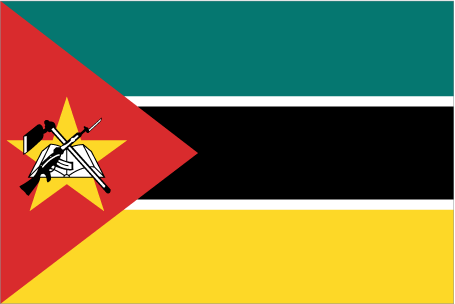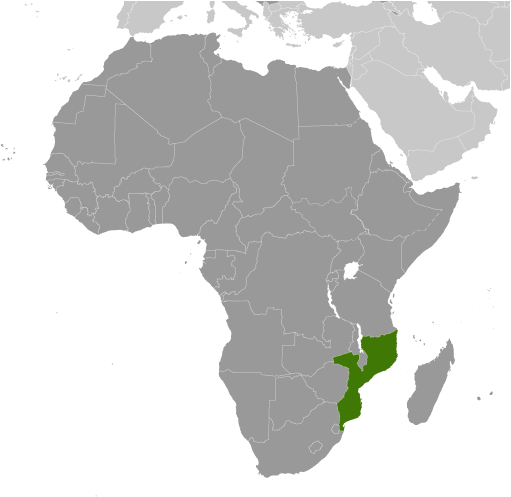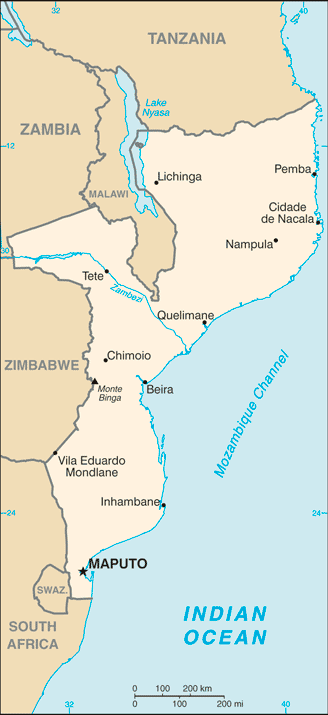|
Economy - overview:
|

|
|
At independence in 1975, Mozambique was one of the world's poorest countries. Socialist mismanagement and a brutal civil war from 1977-92 exacerbated the situation. In 1987, the government embarked on a series of macroeconomic reforms designed to stabilize the economy. These steps, combined with donor assistance and with political stability since the multi-party elections in 1994, have led to dramatic improvements in the country's growth rate. Fiscal reforms, including the introduction of a value-added tax and reform of the customs service, have improved the government's revenue collection abilities. Inspite of these gains, Mozambique remained dependent upon foreign assistance for 40% of its 2012 annual budget and over half the population remained below the poverty line. Subsistence agriculture continues to employ the vast majority of the country's work force and smallholder agricultural productivity and productivity growth is weak. A substantial trade imbalance persists although aluminum production from the Mozal smelter has significantly boosted export earnings in recent years. In 2012, The Mozambican government took over Portugal's last remaining share in the Cahora Bassa Hydroelectricity Company (HCB), a signficant contributor to the Southern African Power Pool. The government has plans to expand the Cahora Bassa Dam and build additional dams to increase its electricity exports and fulfill the needs of its burgeoning domestic industries. Mozambique's once substantial foreign debt has been reduced through forgiveness and rescheduling under the IMF's Heavily Indebted Poor Countries (HIPC) and Enhanced HIPC initiatives, and is now at a manageable level. In July 2007, the US government's Millennium Challenge Corporation (MCC) signed a $506.9 million Compact with Mozambique. Compact projects will end in September 2013 and are focusing on improving sanitation, roads, agriculture, and the business regulation environment in an effort to spur economic growth in the four northern provinces of the country. Citizens rioted in September 2010, after fuel, water, electricity, and bread price increases were announced. In an attempt to lessen the negative impact on people, the government implemented subsidies, decreased taxes and tariffs, and instituted other fiscal measures. Mozambique grew at an average annual rate of 6%-8% in the decade up to 2012, one of Africa's strongest performances. Mozambique's ability to attract large investment projects in natural resources is expected to fuel continued high growth in coming years. Revenues from these vast resources, including natural gas, coal, titanium and hydroelectric capacity, could overtake donor assistance within five years.
|
|
|
GDP (purchasing power parity):
|

|
|
$26.22 billion (2012 est.)
country comparison to the world: 120
$24.39 billion (2011 est.)
$22.72 billion (2010 est.)
note:
data are in 2012 US dollars
|
|
|
GDP (official exchange rate):
|

|
|
$14.64 billion (2012 est.)
|
|
|
GDP - real growth rate:
|

|
|
7.5% (2012 est.)
country comparison to the world: 22
7.3% (2011 est.)
7.1% (2010 est.)
|
|
|
GDP - per capita (PPP):
|

|
|
$1,200 (2012 est.)
country comparison to the world: 212
$1,100 (2011 est.)
$1,100 (2010 est.)
note:
data are in 2012 US dollars
|
|
|
GDP - composition by sector:
|

|
|
agriculture: 31.8%
industry:
24.6%
services:
43.6% (2012 est.)
|
|
|
Labor force:
|

|
|
10.1 million (2012 est.)
country comparison to the world: 50
|
|
|
Labor force - by occupation:
|

|
|
agriculture: 81%
industry:
6%
services:
13% (1997 est.)
|
|
|
Unemployment rate:
|

|
|
17% (2007 est.)
country comparison to the world: 152
21% (1997 est.)
|
|
|
Population below poverty line:
|

|
|
52% (2009 est.)
|
|
|
Household income or consumption by percentage share:
|

|
|
lowest 10%: 1.9%
highest 10%:
36.7% (2008)
|
|
|
Distribution of family income - Gini index:
|

|
|
45.6 (2008)
country comparison to the world: 37
47.3 (2002)
|
|
|
Investment (gross fixed):
|

|
|
26.8% of GDP (2012 est.)
country comparison to the world: 35
|
|
|
Budget:
|

|
|
revenues: $4.37 billion
expenditures:
$5.324 billion (2012 est.)
|
|
|
Taxes and other revenues:
|

|
|
29.8% of GDP (2012 est.)
country comparison to the world: 98
|
|
|
Budget surplus (+) or deficit (-):
|

|
|
-6.5% of GDP (2012 est.)
country comparison to the world: 184
|
|
|
Public debt:
|

|
|
48.1% of GDP (2012 est.)
country comparison to the world: 68
45.3% of GDP (2011 est.)
|
|
|
Inflation rate (consumer prices):
|

|
|
3.5% (2012 est.)
country comparison to the world: 95
10.4% (2011 est.)
|
|
|
Central bank discount rate:
|

|
|
9.5% (17 January 2013 est.)
country comparison to the world: 101
3.25% (31 December 2010 est.)
|
|
|
Commercial bank prime lending rate:
|

|
|
18.8% (31 December 2012 est.)
country comparison to the world: 18
19.1% (31 December 2011 est.)
|
|
|
Stock of narrow money:
|

|
|
$4.006 billion (31 December 2012 est.)
country comparison to the world: 108
$3.576 billion (31 December 2011 est.)
|
|
|
Stock of broad money:
|

|
|
$5.268 billion (31 December 2011 est.)
country comparison to the world: 128
$4.095 billion (31 December 2010 est.)
|
|
|
Stock of domestic credit:
|

|
|
$3.711 billion (31 December 2012 est.)
country comparison to the world: 125
$3.387 billion (31 December 2011 est.)
|
|
|
Market value of publicly traded shares:
|

|
|
$NA
|
|
|
Agriculture - products:
|

|
|
cotton, cashew nuts, sugarcane, tea, cassava (tapioca), corn, coconuts, sisal, citrus and tropical fruits, potatoes, sunflowers; beef, poultry
|
|
|
Industries:
|

|
|
aluminum, petroleum products, chemicals (fertilizer, soap, paints), textiles, cement, glass, asbestos, tobacco, food, beverages
|
|
|
Industrial production growth rate:
|

|
|
8% (2010 est.)
country comparison to the world: 26
|
|
|
Current account balance:
|

|
|
-$2.432 billion (2012 est.)
country comparison to the world: 144
-$1.615 billion (2011 est.)
|
|
|
Exports:
|

|
|
$3.516 billion (2012 est.)
country comparison to the world: 127
$2.776 billion (2011 est.)
|
|
|
Exports - commodities:
|

|
|
aluminum, prawns, cashews, cotton, sugar, citrus, timber; bulk electricity
|
|
|
Exports - partners:
|

|
|
South Africa 28.9%, Belgium 15.1%, Italy 11.8%, Spain 8.5%, China 6.6% (2011)
|
|
|
Imports:
|

|
|
$5.373 billion (2012 est.)
country comparison to the world: 124
$4.187 billion (2011 est.)
|
|
|
Imports - commodities:
|

|
|
machinery and equipment, vehicles, fuel, chemicals, metal products, foodstuffs, textiles
|
|
|
Imports - partners:
|

|
|
South Africa 35.4%, China 10.2%, India 8.4%, US 6.6%, Australia 6.1%, Portugal 4.4% (2011)
|
|
|
Reserves of foreign exchange and gold:
|

|
|
$2.626 billion (31 December 2012 est.)
country comparison to the world: 113
$2.469 billion (31 December 2011 est.)
|
|
|
Debt - external:
|

|
|
$4.88 billion (31 December 2012 est.)
country comparison to the world: 115
$4.461 billion (31 December 2011 est.)
|
|
|
Exchange rates:
|

|
|
meticais (MZM) per US dollar -
28.13 (2012 est.)
29.075 (2011 est.)
33.96 (2010 est.)
26.28 (2009)
24.125 (2008)
|
|
|
Fiscal year:
|

|
|
calendar year
|
|
|
|





 )
)



